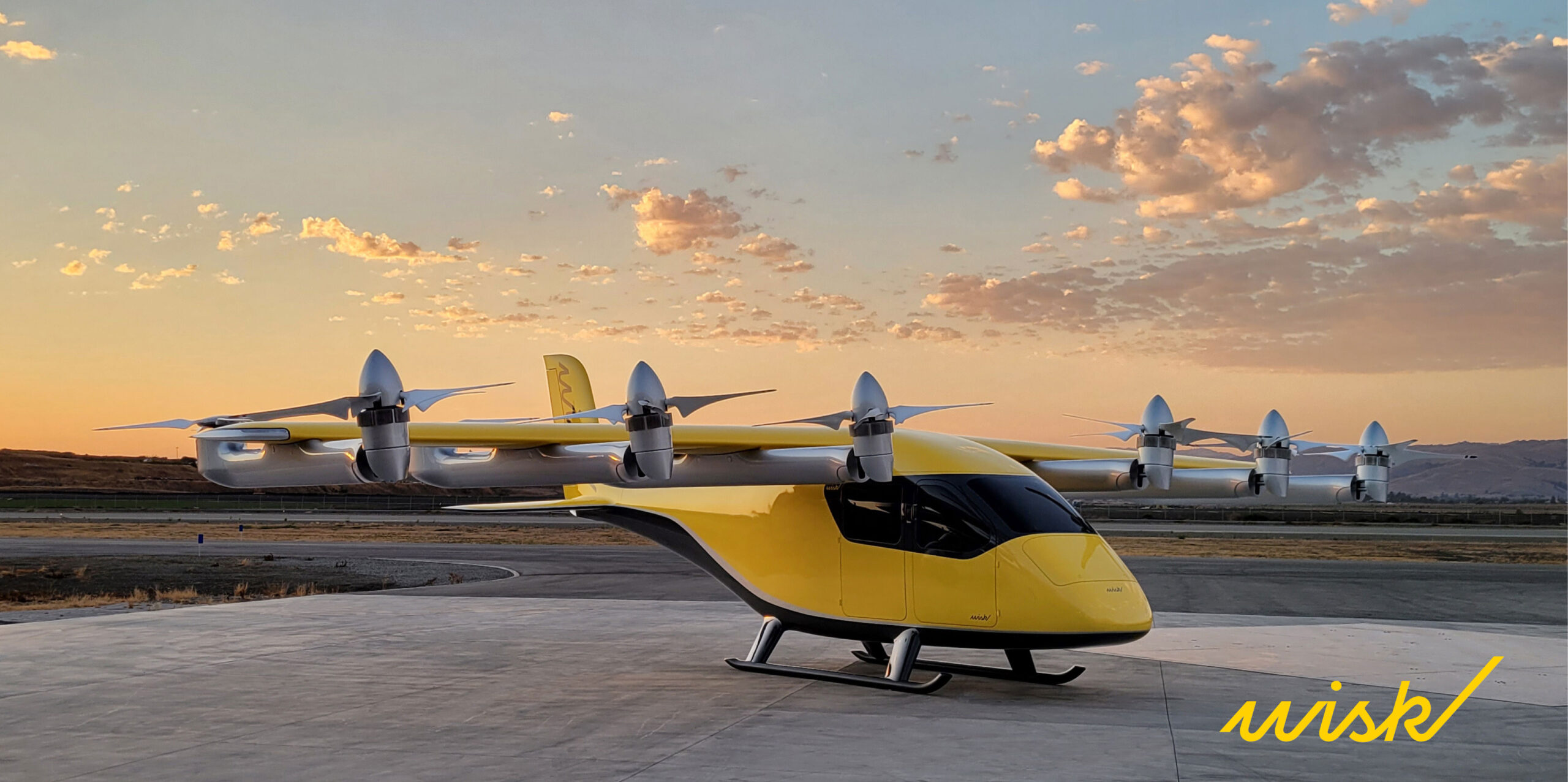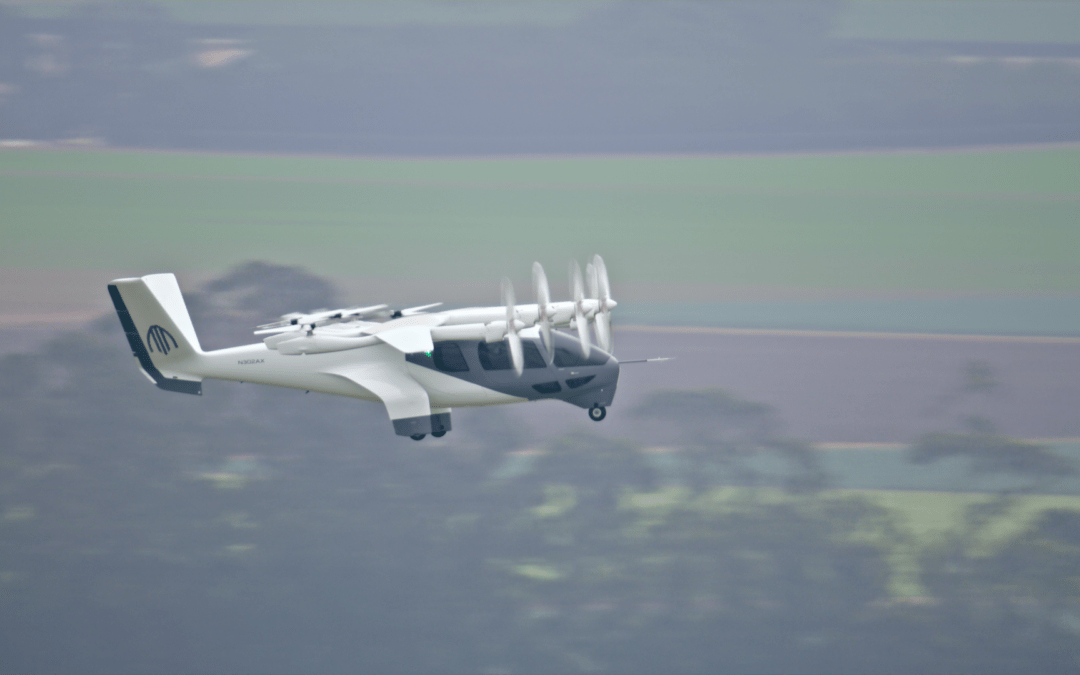By Scott Simmie
InDro Robotics is pleased to announce it is part of a delegation heading to the US next week in a trade delegation organised by Canadian Advanced Air Mobility, or CAAM. As Canada’s federal industry association for AAM, CAAM is the nation’s unified voice in the sector, working with industry and regulators to advance the path toward the coming world of Advanced Air Mobility.
You’ve likely heard about AAM by now. But just in case, here’s a quick and high-level refresher: Technology advances of the past decade have led to what are often referred to as transformational aircraft. These run the gamut from large and autonomous cargo drones through to what are commonly called air taxis – electrically powered eVTOL (including standard multi-rotor, fixed-wing VTOL, tilt-rotor and other innovative designs) intended to carry humans and cargo. Nearly all of these aircraft are electrically powered and sustainable, while some involve hybrid designs with fuel-powered generators supplying or topping up electrical power for the motors. You can also throw smaller drones into the mix, as they will be sharing airspace and taking on newer use-case scenarios involving autonomous, Beyond Visual Line of Sight flight in urban settings.
VALUE PROP
These aircraft will fulfil a number of important use-case scenarios. For example, they will transport people or cargo to areas that currently do not have airports. They will also move goods and humans quickly across large urban areas. Minimal infrastructure is needed for these VTOL aircraft. Rather than an airport, these devices will take off and land from “vertiports” similar to helicopter pads.
People or critical supplies can be transported efficiently and sustainably to places that were previously not an option for traditional aircraft – and where the cost or availability could not justify helicopter flights. They will transport critical medical supplies between hospitals in a fraction of the time ground transport would require. Smaller drones might deliver devices like Automated External Defibrillators, Epipens or life-saving medications in emergencies.
Plus, of course, air taxis will carry people across major urban centres or to nearby satellite regions. Eventually, it’s envisioned you’ll be able to hail one of these machines the same way you call an Uber – and your pickup spot will be a vertiport.
This future isn’t coming immediately, as Federal Aviation Administration Type certifications are still underway. But it most definitely is coming. Several companies – which the CAAM delegation will visit – are leaders in the air taxi space, with fully functional aircraft they plan to put into operation once FAA certification is complete.
As for the FAA? The US regulator is fully onboard with this new era but obviously wants to ensure the integration between traditional aviation and these transformational vehicles is safely achieved. To that end, it has already released a blueprint for how it envisions this mixed air traffic will play out:
THE US LEADERS
A number of US companies are at the vanguard of this new era, designing and testing aircraft that are very close to being production models. And CAAM, led by Executive Director JR Hammond, has pulled together a trip that will allow delegates to meet with several of the key players based in San Francisco. The mission will have onsite visits and – pending weather – observe demo flights at the following AAM leaders:
WISK
This company has built what it describes as the “world’s first self-flying, all-electric, four-seat air taxi.” Its current model, called Generation 6, “is the world’s first all-electric, autonomous, four-seat eVTOL (electric vertical takeoff and landing) air taxi designed for passenger transport. Our larger, spacious new aircraft provides more space for passengers and their luggage, and ensures that our service is accessible for those with disabilities.”
The unique design incorporates both eVTOL and a fixed wing for range. Its eight tiltable robots enable vertical take-off and landing. Once in the air, those rotors tilt forward for the transition into more efficient fixed-wing flight. Range is 144 kilometres (90 miles), traveling at speeds up to 120 knots. Generation 6 can recharge in a scant 15 minutes, allowing for rapid turnaround. This is a fully autonomous aircraft with multiple redundant safety features, and with human oversight from the ground. WISK is a fully owned subsidiary of Boeing, and has been in operation since 2010.
Below: The WISK Generation 6

JOBY
The CAAM delegation will visit another leader in this space, Joby Aviation. Its six-rotor piloted aircraft is designed to carry four people, and also employs tilt rotors and a fixed wing. It’s also fast – capable of speeds up to 320 km/hour (200 mph). Despite the six large rotors, Joby has put considerable engineering effort into one of the downsides of multi-rotors: Noise.
According to Joby, its aircraft is as “quiet as a conversation.” And they’re not the only ones saying it. The company websites quotes Aviation Week’s Guy Norris as saying: “The aircraft made only a partially perceptible sound that, in this editor’s view, would almost certainly be undetectable against the everyday noise background of an urban environment.” So that’s a big bonus.
Though there will undoubtedly be many useful routes once this aircraft is certified and integrated into US airspace, its website envisions flights such as from a downtown vertiport in New York City to JFK airport. Driving by car, says Joby, takes 49 minutes; flying gets you there in seven minutes.
The company is in the midst of testing and certification with the FAA, and has completed the first three of five stages in that process. Joby has flown more than 50,000 km on its full-scale prototype and Toyota has announced it will be investing US $500M into the company in 2025.
Below: Joby takes flight
ARCHER
The third air taxi company on the agenda is Archer. In 2024, the company received its Part 135 Air Carrier & Operator Certificate from the FAA – one of just two air taxi manufacturers globally to have announced receipt of that certificate. Its “Midnight” aircraft is currently undergoing FAA Type certification. The company has delivered an aircraft to the United States Air Force – the first of a potential six in a contract worth up to US $142M. It is planning to begin trials in India shortly, with other venues on tap.
All of these air taxis have interesting designs, but Midnight is particularly intriguing. It has six tilt-rotors forward of its fixed wing, and an additional six fixed rotors aft of that wing. So a total of 12 rotors lift and land Midnight vertically, while the six tilt-rotors make the transition to and provide thrust for forward flight. The tips of the tilt-rotor propellors are flexed backwards to reduce noise.
NASA
In addition to visiting the three above companies, the CAAM delegation will also spend a day at the NASA AMES Research Center. That visit will include seeing NASA’s Vertical Motion Simulator, an Advanced Air Mobility simulation, a live demonstration of an eVTOL AAM vehicle, and plenty of discussion around the implications and challenges of this new phase in global aviation.
In addition to CAAM, there will be 33 companies, regulators and research institutes on the trip. These include Transport Canada, NAV Canada, the National Research Council – as well as such established companies as CAE, Kongsberg Geospatial, and NGC Aerospace.
“This trip represents a tremendous opportunity for Canadian entities in this sector to meet with some of the leaders in the AAM world and see their technologies up close,” says CAAM Executive Director JR Hammond.
“But just as importantly, it gives these leading AAM companies a chance to learn about the incredible Canadian companies that are in or adjacent to this space and explore potential partnerships down the road. We are incredibly excited about this trip.”
Below: The Archer Midnight hits a major milestone in June of 2024, with its first transition flight. It’s a longer video, but a cool one
INDRO’S TAKE
The world of Advanced Air Mobility is coming. And InDro is pleased to be taking part in this CAAM-organized event.
InDro has long worked to advance the concept of integrated airspace, carrying out a broad variety of research in concert with Transport Canada and the National Research Council in areas ranging from Detect and Avoid technologies through to testing urban wind tunnels to help with prediction models and future standards for urban RPAS flight. We’ve even tested and mapped the strength of 5G signals at various altitudes in urban environments to ensure robust connections for future autonomous flights over cities and potential UTM systems.
We have concrete plans for deliveries of critical supplies, including deploying heavy-lift and long-range drones – which will be part of the AAM space. And, with our expertise in designing and building autonomous mobile robots, we foresee other opportunities.
“The future of AAM is all about automation, including autonomous flight and an eventual automated Uncrewed Traffic Management (UTM) system that will ensure safe flights within corridors and minimise any potential for conflict with traditional aviation,” says InDro Founder and CEO Philip Reece.
“As part of that automated future, InDro is currently exploring AMRs that will autonomously assist with tasks like cargo loading and offloading, repositioning aircraft on the ground, and more. We look forward to working with AAM clients to build robust solutions in this space.”
We’d also like to mention that this trade mission was made possible through the CanExport Program by the Government of Canada’s Trade Commissioner Service.
Interested in this sector? Stay tuned; we’lll be sending reports from the field.

